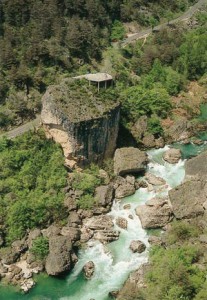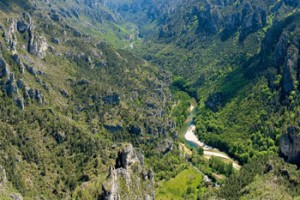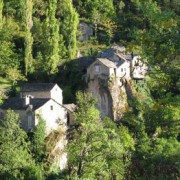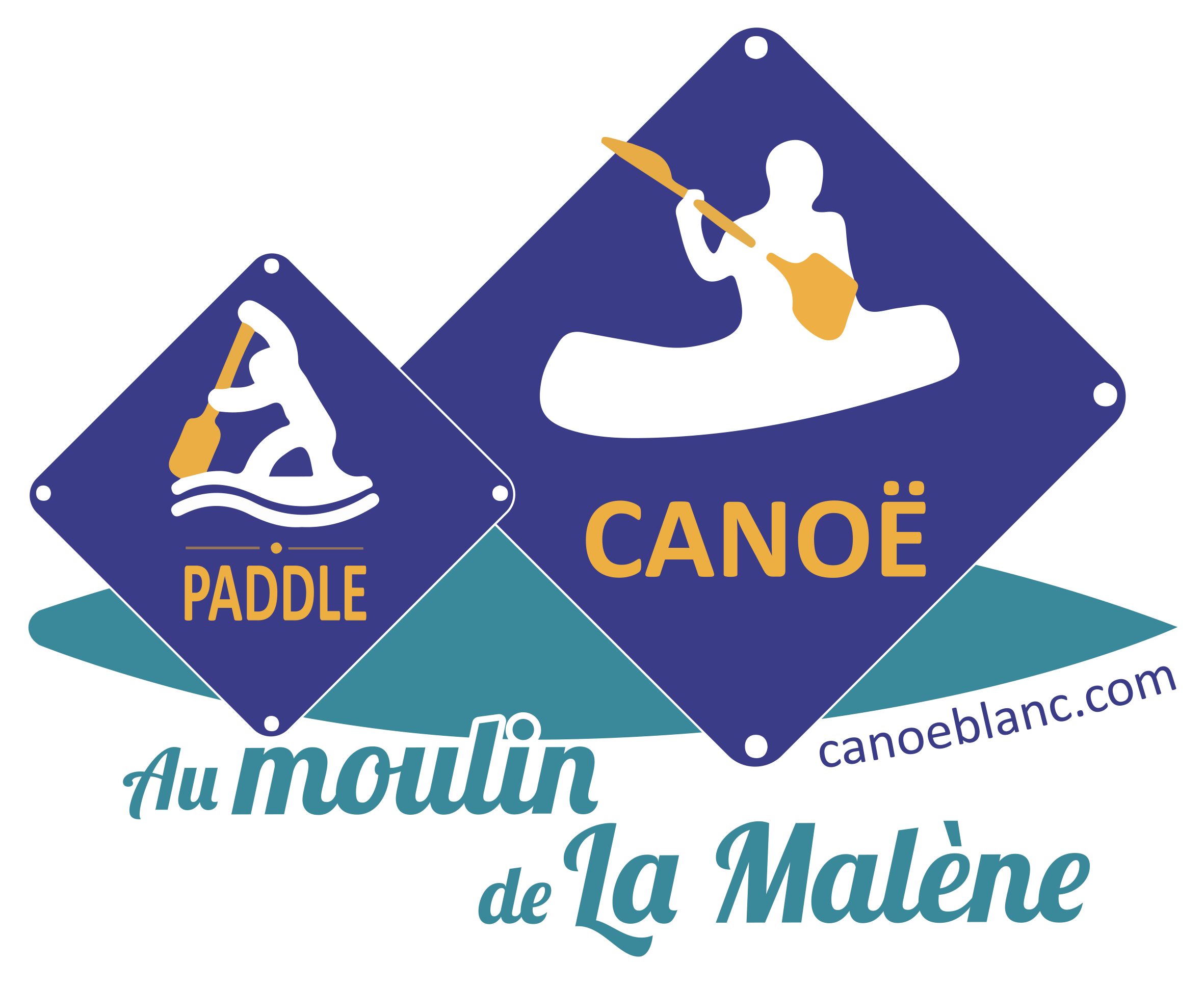The gorges of the Tarn
About Beaver of Tarn
In the middle of the 20th century, even though at that time it was a protected species, the Eurasian beaver had disappeared from Languedoc-Roussillon, it was sought after by the poachers for its fur, and driven out of the inhabitants because of its nuisances. In order not to see the species extinct, the Parc National des Cévennes reintroduced 13 of these European mammals on the Tarn and Jonte in 1977, 11 years later, 12 other beavers were in turn reintroduced on the Dourbie in Aveyron. This operation was a success, since today the Tarn, the Jonte, and the Dourbie are peopled with beavers. From time to time, a special “beaver observation” is organized, on the easiest of the courses, the 8-kilometer beaver trail.
La bête du Tarn

The Tarn has a strange and mysterious history, the legend of Drac: established near the fountain of Burle, after struggling against Passage-du-Dracla leprosy, Sainte-Enimie aided by the fortunes of the kings Clotaire and Dagobert, undertakes to found a monastery. Soon the land is acquired and a host of craftsmen set to work. But this project contradicted the Beast of the Tarn, also called “Le Drac”. A dark and obscure spirit, he hides behind the shadows and haunts the banks of the rivers. It knows the whole region, every corner of it, it torments the waters and scares the inhabitants, it can even appear in several forms. It burns with its breath the beginnings of construction of the monastery, so the Holy one obtains the authorization of God to enchain the accomplice of the devil if this one approaches again of the village. The next evening, the Holy Enimie awaits him, and suddenly there he is. It then rushes on the devil and so runs a race, but the evil leaves behind strange bubblings, dark whirlwinds that blind the pursuer. Desperate, exhausted, she falls to her knees, implores the power of nature and suddenly countless stones fell in the direction of the Cursed who was stuck, and died beneath these rocks. Creating so on surprising scenery, some say that he manages to sneak out of the trap, and that he hides while waiting for better days …
Les Nymphes du château

When we take parcours des Nymphes we can observe the Castle of La Caze, built in the 15th century, its owner, Soubeyrane Alamand, would have had eight daughters, all of whom lived in the castle. They were given such great beauty that they attracted to the castle all the damoiseaux of the region: the legend of the nymphs. The castle also served as a prison during the French Revolution, today it has been transformed into a 4-star luxury hotel, and in 1988, is listed as a Historic Monument. Some celebrities have already stayed at this hotel, such as the Prince of Monaco.
Lucy, our origins…
“Lucy”, a film by Luc Besson released in 2014, presents us with a young woman who, after taking experimental drugs, acquires great powers. The film was filmed in Taipei, Paris, but also in Lozère, in Gorges du Tarn. The character of Lucy meets his homonymous ancestor in the middle of our playground! The route is named as it is possible to pass where the scene of the film was turned.
Wonders of Tarn

As its name indicates, le Sublime parcours is a condensed of the marvels of the Tarn. You can see climbers climbing all year round magnificent cliffs. One can also see troglodyte houses, which are carved in the rock and are one with the cliff. One can appreciate the elegance of the uniform rocks, the fauna and the flora. A special place was designed for this, the sublime point, from there we have a magnificent panorama on Gorges du Tarn.
Troglodytes villages in Gorges du Tarn
Castelbouc :
Located upstream from Sainte Enimie and Prades, the village is discovered from a promontory located along a road on the right bank. There is also Saint Chély of the Tarn: downstream of Sainte Enimie this village is accessible by a magnificent bridge with a single arch that overlooks the waterfalls of a beautiful resurgence of the Tarn. The church of the eleventh century, the cemetery, the old town hall and school attest to the flourishing past of this village.
Pougnadoires :
Village with troglodyte houses, is located between the road of the Gorges and the cliffs of Causse de Sauveterre. A path climbs the first bank of cliffs to traverse the circus and join the viewpoint of Cabrunas. It also allows to discover the old terraces.

Hauterives :
Located on the left bank, you can access to the village by boat or by the trail from La Malène or Saint Chély. A cable dump allows to transport the materials of this village in full restoration. Here obligatory photo stop.
La Croze :
In the middle of the straits, this village is very famous thanks to its postcard.

La Sablière :
Downstream of the Vignes, left bank, this hamlet is built on a rocky promontory overlooking the river. The typical houses form a remarkable architectural ensemble. The whole is 24 km.
Eglazine :
Troglodyte hamlet located in the crown of calcareous rocks of the causse of Sauveterre. Until the sixties, an old lady lived there.
Saint Marcelin :
Village troglodyte partly restored, chapel, dwelling house. Remains of a castle and spring.








